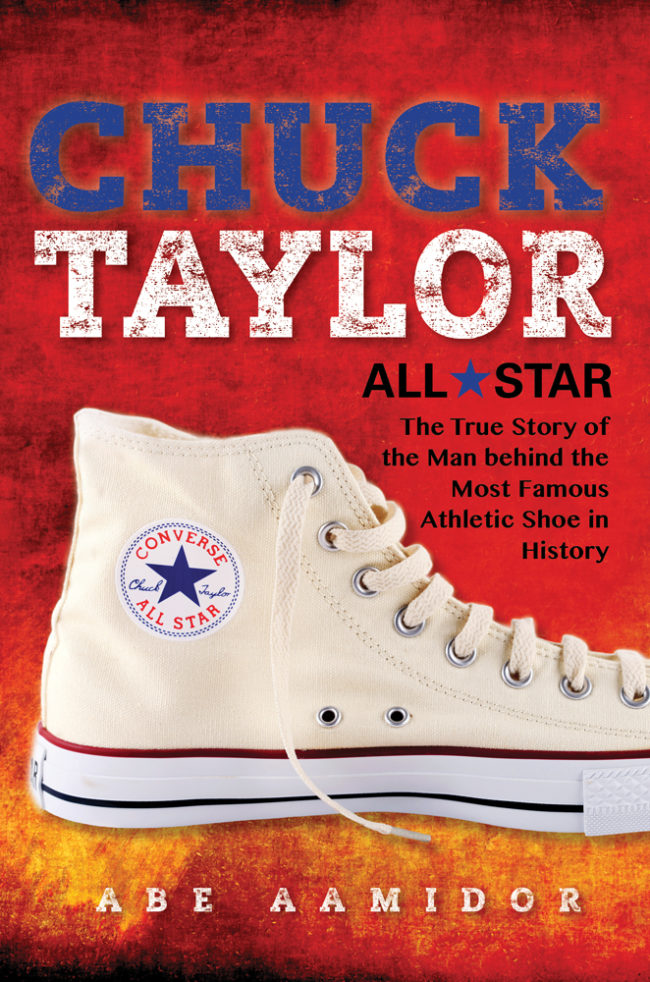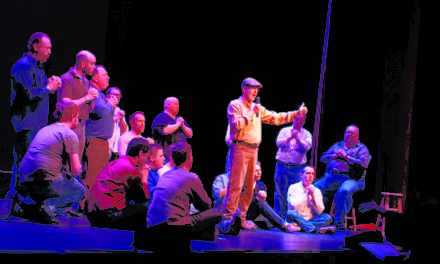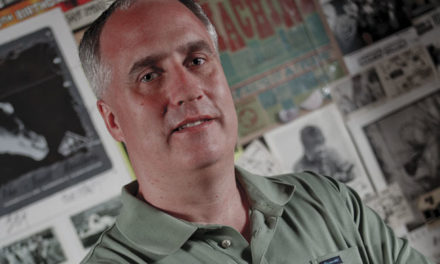BY JULIE GRAY
Many people own, and many more know of, Converse Chuck Taylor All Star athletic shoes. Though the basketball players they were originally designed for stopped wearing them in games in 1969, these kicks are still kicking. Today, they can be seen on everyone from Michelle Obama and Miley Cyrus to Will Smith and Kristen Stewart.
And if, while lacing up your own Chucks, you’ve ever wondered if there is a real Chuck Taylor, IU Press has recently

Courtesy image
issued a paperback edition of a 2004 book that gives the definitive answer. Yes, there was a Chuck Taylor, and he was born in Brown County in 1901.
Chuck Taylor, All Star is an interesting read even if you’re not a sneaker fetishist or a basketball fan. That’s because Taylor was a true American character. Author Abe Aamidor concedes that Taylor was not an outstanding basketball player, coach, or strategist. He falls rather in the grand Horatio Alger tradition of self-made men. Detailing Taylor’s contributions to the game, Aamidor concludes that “what [Taylor] invented was himself.”
Taylor played basketball with some note on the Columbus High School Bull Dogs, and later for two industrial league teams. But just as the shoes named for him are now most famous off the court, his real achievement was as a basketball promoter, not a player. When he started working for Converse in the 1920s, Aamidor writes, he “was a terrible salesman.” But after getting some tips from the great University of Notre Dame football coach Knute Rockne, Taylor became so crucial to the company that Aamidor credits him with literally saving it during the Depression. In fact, he’s associated with the shoe that bears his name due to his sales acumen—he didn’t invent them, after all. Aamidor writes that his name was added to the ankle patch in 1932 “after his marketing genius became evident.”
Taylor crisscrossed the country in expensive cars, a sample case of Chuck Taylors in his trunk alongside his golf clubs. By the time of his death in 1969, Aamidor estimates that Taylor had hosted 4,000 Fundamentals of Basketball clinics that succeeded both at popularizing the game as well as at selling some 400 million pairs of his shoes.
To be fair, Taylor made other contributions to the game. Aamidor writes that he “was instrumental in getting other basketball men top jobs at important universities.” He created an influential college basketball All-American list, as well as a popular Converse basketball yearbook. In recognition, he was inducted into the Basketball Hall of Fame in 1968.














